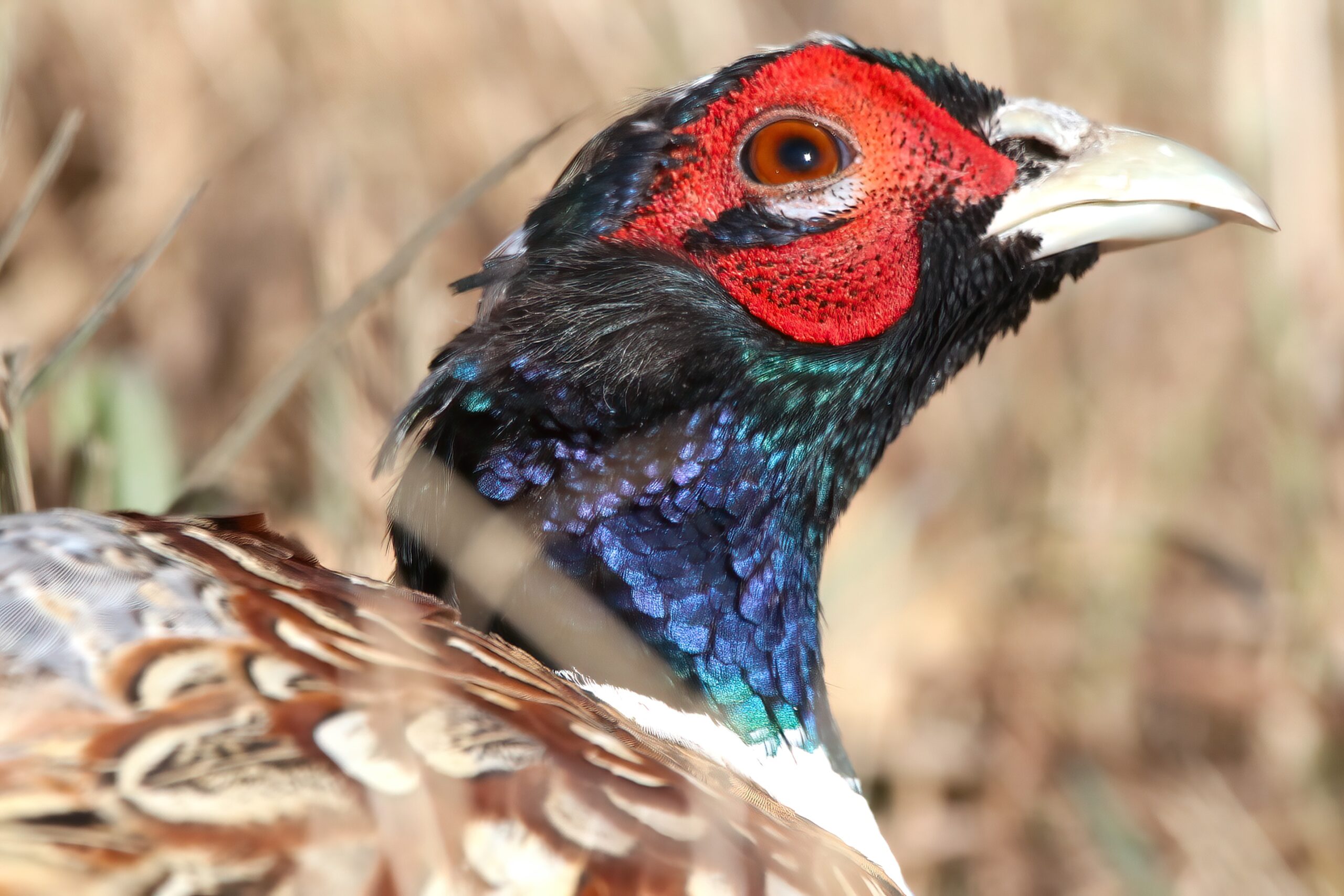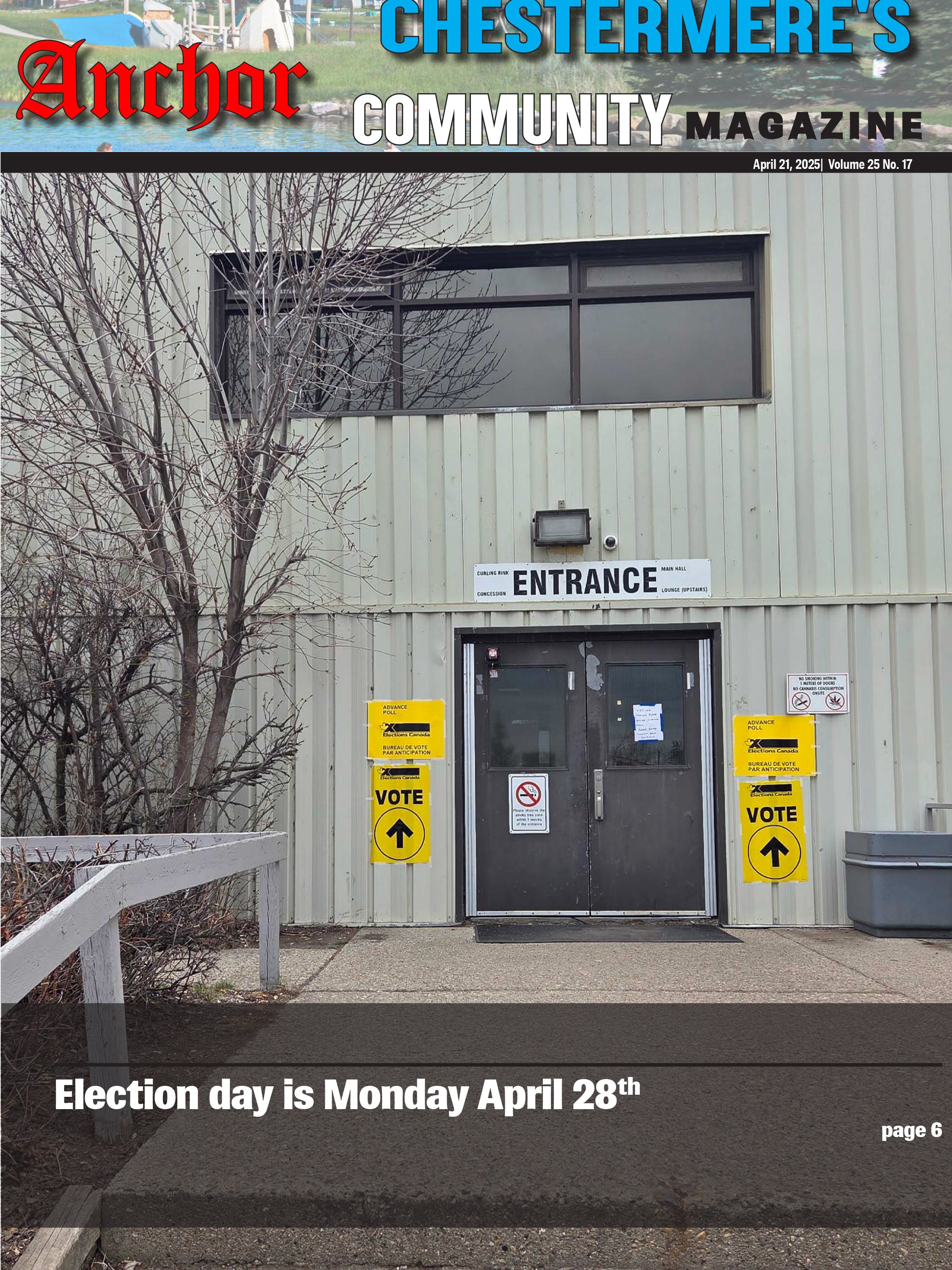This late summer and early autumn, we’ve been enjoying the bird watching and panoramic views along the northern berm defining Dalmead Lake, located southeast of Langdon. The east side of the gravel road leading to the lake is dotted with grazing cattle. The west side is dressed in maturing grasses, and some thistle. Cloudless sulphur butterflies dance from flower to flower. A northern harrier hawk floats mere feet above the land, held it seems by invisible strings as it hunts. Things look as they should. Natural. Serene.
However, it’s busy today as we prepare to bird. Hunters, wearing orange are engaging in a boisterous chatter, complaining about poachers. Trained hunting dogs are excited about the impending flushing of the target bird. A few hunters parked along the roadside are upset that two hunters are already out on the pheasant release land, while the individuals in a pickup truck, stop every now and then to release from crates, a number of male ring-necked pheasants. Once the truck leaves the designated hunting area, hunters and dogs can take to the field in search of their feathered prize and dinner.
From the top of the berm, we watch the hunting dogs run around the grasslands, directed by their masters with a whistle now to change direction. A blast from a shotgun tells us a pheasant has been flushed. Introduced in 1908 near Strathmore, ring-necked pheasant populations became well established by the end of the 1930s, especially near Brooks. So reproductive were pheasants, that hunters harvested an annual average of 145,000 birds up to the mid-1950s. Over the next 40 years, pheasant populations declined. The provincial government intervened by launching a Provincial Pheasant Release Program releasing hatchery raised birds. In 2013, the Alberta Conservation Association took over the program and with the help of Fish & Game Clubs, ensured pheasant hunting could continue.
Pheasant hunting culminates with the Taber Pheasant Festival, held in October. During the festival, 5100 pheasant will be released. Hunting sites can be reserved. A novice shoot is held. Pheasant is served during the week at the Whiskey and Pheasant Tasting portion of the festival.
At the parking lot, we chat with one individual who is involved in releasing the pheasants. He shares his thoughts, stating that he cannot tell us how many have been released this sunny morning. We are told that the pheasants, raised by humans in a hatchery, do not develop a fear of people, making them easy targets. When asked about the survival rate of birds released, he tells us at this site, virtually 100% of the pheasants are shot. He wishes that every pheasant could escape.
As we drive north, away from the lake and hunting zone, we too, wish the pheasants could fly free. A kilometre up the road, our wish is answered. A single pheasant forages roadside. Stopping at a distance, we get out our cameras. Appearing only mildly concerned, our pheasant continues his feeding. Our shooting of the pheasant ends. The pheasant heads into taller grass. We drive on.
TO SHOOT A PHEASANT

In response to Canada's Online News Act and Meta (Facebook and Instagram) removing access to Canada's local news from their platforms, Anchor Media Inc encourages you to get your news directly from your trusted source by bookmarking this site and downloading the Rogue Radio App. Send your news tips, story ideas, pictures, and videos to info@anchormedia.ca.






